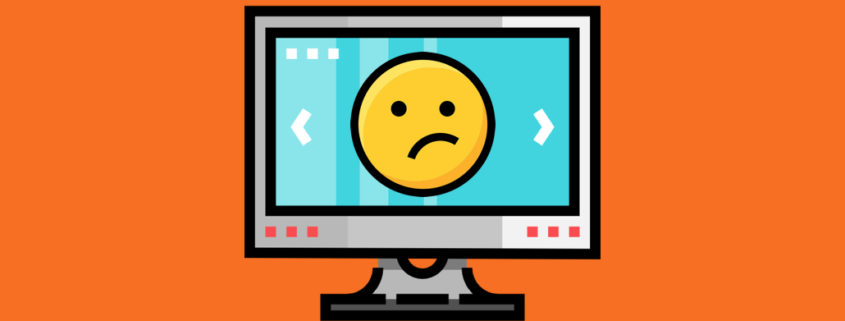Is Your HR Software Hurting Your Employee Experience?
Human resources technology is in a unique position to not only provide employers with employee experience data, but to also influence the quality of the employee experience, itself. For years software applications have allowed HR departments to more efficiently manage the administrative tasks associated with people management, but now through next generation interfaces, applications are enabling employee self-service in new and exciting ways, too.
From automatic prompts for new hires to schedule mentoring luncheons to instant access to an interactive, virtual organization chart, modern talent wants information on the go and on demand. But, despite the increasingly innovative ways in which automation can empower both employees and HR to process data, there should still always be a place for “actual human” engagement between applicants, employees, HR and management.
With so many options available in the HR tech space, and numerous factors impacting a successful vendor selection outcome, it’s no surprise that HR software often turns into a love-hate relationship with employers. The key to whether you have the most suitable HR software in place certainly depends on the degree to which it aligns with your people strategy, but also its ability to turn stored HR data into impactful workforce insights.
In this blog, we’ll discuss the following HR technology considerations for evaluating whether an application will have a positive impact on your organization’s overall employee experience.
- Product implementation
- Support and training
- Integration vs. all-in-one
- Employee self-service
- Communication
- Reporting and predictive insights
Product Implementation
You might ask how relevant the initial implementation phase is to the entire employee experience. After all, arguably it may only touch a handful of administrative users in human resources before the product is unveiled to an entire organization for use. However, how many of us have heard about painful software implementations that have taken (gasp!) more than a year!
While hopefully this is the exception more than the rule within your HR tribe, even month-long implementations can adversely impact the employee experience when you consider the hasty stop-gap plans that are used while waiting for a new product.
When selecting a technology vendor, verify whether implementation is likely to take weeks or months. Also, do research to substantiate whether this expectation has been accurate for other customers. If your plan is to implement more than one module of an application at different points in time, have a good understanding of how the vendor partner supports you in the first phase versus subsequent implementation phases (once the new client “honeymoon” may be over).
Support and Training
For many employers, the quality of the employee experience is influenced by the timeliness with which information is made available to employees upon their request. Some requests must be addressed by pulling data from HR software applications. Your organization’s ability to process these requests will depend not only on staff members’ ability to use the software effectively, but also the vendor’s responsiveness when your team needs assistance.
Take a hard look at your organization’s true support needs while thinking about the tech savviness of your own team as well as the quantity and quality of the vendor resources available. Will you be content to wait three days for a support ticket response from your vendor, or do you usually require same-day assistance? Is it easy to search for the training resources you need to learn how to use new software features? The faster you can get the information you need as an internal product champion, the faster you will be able to serve the needs of your own employees.
Integration vs. All-in-One
Should my organization adopt an all-in-one human resources information system (HRIS) or a series of stand-alone specialty applications?
This may be the most polarizing question in the HR technology space, and your preferred camp will depend on the needs of your employer. It may also depend on what you inherited from your predecessors when joining your organization. In fact, the chart below shows that many respondents from ExactHire’s 2018 Tech-Based Employee Experience Survey use both an HRIS and other stand-alone specialty applications. In fact, the two camps are not mutually exclusive.
- HR Technology Product Mix
- HRIS + stand-alone recruiting
- HRIS + stand-alone onboarding
- HRIS + stand-alone payroll
- HRIS + other HR software
- % Respondents
- 38%
- 8%
- 13%
- 22%
The following factors may help you determine which product mix is right for your organization.
Administrative pain points
Which pieces of the talent management process are taking up the most time for HR? When HR is buried in administration, “actual human” engagement suffers. If recruiting is the priority due to adding a new office location, for example, then a robust applicant tracking system may be desirable compared to a payroll company’s HRIS recruiting module. However, if hiring happens relatively infrequently but payroll is complicated, then an employer may prefer an HRIS with basic recruiting capabilities for the occasional job opening.
Data gaps and data redundancy
If end-to-end integration of data is the priority for your organization, then consider whether any sacrifices you make on features outweigh the opportunity cost of time spent on potential data export/import activities.
Or, if you plan on integrating separate solutions, understand how employees move through the virtual employment life cycle and make sure data remains accurate across systems and easily accessible.
Feature wish list
Will the functionality that applicants or existing employees expect from your organization (relative to your competitors) be available in an all-in-one system? Or, is there an application that you can use as your data change “single source of truth” that pushes information to periphery applications via one-way integration?
Growth plans
Do today’s tech needs look similar to your tech needs one to two years from now? If not, consider the scalability of any stand-alone applications and/or the ability to easily incorporate additional HRIS modules later.
Price
When evaluating different types of systems, think about what you need today and whether you are paying only for your needs today…or also for things you might need some day. Finding the balance between paying for scalability vs. paying for unnecessary feature bloat isn’t always easy. Spending more money on ultimately underutilized technology means less money available for other programs that may positively impact the employee experience.
Employee Self-Service
Customer self-service options abound in the information economy. From scanning your own groceries to using Alexa as your modern mix tape, consumers’ ability to help themselves is a killer advantage in the competition for market share. The same dynamic exists in the employment arena–employers that implement the right combination of personal interaction mixed with savvy self-service options are winners in the war for talent.
And not only does giving employees the ability to help themselves engage them, it frees HR to work on other experience initiatives. Additionally, it ensures the accuracy of HR data since it is regularly verified by the true authority on the data–the employee.
Be sure and have a clear understanding of how any software application’s self-service options may empower your own employees to do more. For example, look for applications that provide subsequent prompts for users to take advantage of other features that would be of interest based on their existing system usage or profile. By providing employees prompts to provide more information over time, software improves the user experience and avoids leaving employees feeling like they are “drinking from the fire hose” just to start using an application.
Communication
Think about your employees’ primary means of communication within the organization. Is it predominantly email, or do many conversations live in chat windows or even in Slack? Wherever correspondence lives, it probably does so because that channel is comfortable, well-established and easy-to-use.
The same must be true of your HR technology in order to engage applicants or existing employees to use communication tools to collaborate on the employee lifecycle. Consider the following questions to assess a software application’s communication tools.
- Is it easy to email someone from the software application? And if that person responds, is his response also documented in the software interface?
- Can users easily connect with one another and take action on pending items within the application (e.g. assign tasks, make notes, update progress)?
- Is it possible to schedule events within the software via calendar integration?
- Do other integrations exist between the software application, social media sites and other related third party sites?
The more your human resources technology aligns with the communication style already preferred by your employees, the better. You want the tools you make available to your workforce to enhance its productivity…not disrupt it.
Reporting and Predictive Insights
One of the most exciting aspects of smart technology is how it enables us to transform stored data into actionable information–allowing employers to spot trends and take action. Emerging HR technology goes a step further and uses artificial intelligence to analyze existing data to predict future outcomes. These predictive insights are the competitive advantage employers need to attract talent that is the best fit for the organization and retain that talent for maximum productivity.
Insights traditionally originate in the reporting dashboard of your HR software. And, the degree to which you will be able to run customized reports and use existing data to make decisions about new hires or new HR processes will vary across software applications. In fact, in the aforementioned survey, only 42% of respondents indicated they have no issues extracting the information they need from their existing HR software.
- Reporting Ease
- Easy to report on desired information
- Struggle to report on desired information
- Cannot report on desired information
- % Respondents
- 42%
- 43%
- 15%
Many HR professionals regularly struggle to pull the reports they need even though the data is stored in their system somewhere. Causes of this struggle are often attributable to
- siloed data living in different systems that are not integrated,
- a complex HRIS that doesn’t have an easy-to-use reporting interface,
- redundant data between system modules that is up-to-date in one module but not the other, or
- having access only to canned reports without the ability to build custom reports on demand.
Your software shouldn’t be holding your employee data hostage.
Best-in-class HR technology gives administrative users access to a virtual workforce explorer to pull incredibly specific data insights on their employee population. Additionally, look for more functionality to marry data from one aspect of the employee life cycle to another to make better decisions. For example, do insights about your best performing existing employees allow you to better vet applicants with similar attributes? More specifically, does your software application prompt you to easily make those correlations?
Alleviating the Pain to Improve Employee Experience
Employees’ opinions about their own experience constantly evolve, and even the smallest radar blips can cause significant declines in satisfaction and engagement over time. The good news is that human resources technology is your tool for measuring the employee experience and capturing insights on how to improve it.
If you have reservations about your current system, then use the considerations presented in this blog to begin evaluating your next steps for incorporating HR software that is better suited to your organization. In our next blog, we’ll address strategies for making a business case for new technology adoption.









